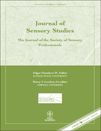PAIRED PREFERENCE TESTS: USE OF PLACEBO STIMULI WITH LIKING AND BUYING PREFERENCES
Abstract
ABSTRACT
Besides responses to the target pair of stimuli being tested in a paired preference test, comparison with responses to a putatively identical “placebo” pair can be used for a test of significance, to determine whether the response frequencies elicited by the target pair are different from those that would be obtained had there been no preference. Yet, preference responses elicited by the placebo pair can also be used as a way of identifying consumers who bias avoided the “No preference” option and thus generated biased response. Such consumers can then be eliminated. Yet, using this approach greatly reduces the sample size. However, using some response options associated with purchase intent rather than liking can reduce the number of consumers that are eliminated. This was confirmed for potato chip, milk and orange juice stimuli. From psychology, the concepts of operational preference and types of response bias appropriate to preference testing were introduced and discussed.
PRACTICAL APPLICATIONS
The measurement of preference and acceptance of foods is important for product development and decisions regarding the launching of new products into the market. The paired preference test has some issues associated with its design and analysis, and these must be considered if preference tests are to give valid and reliable data. One of the problems is that the majority of consumers tend to report preferences even when the stimuli are putatively identical; here, a “No preference” response would seem more appropriate. Such consumers would seem to be reacting to the extraneous conditions of the preference test rather than the sensory characteristics of the putatively identical stimuli under consideration. Such responses could be termed “biased response.” Yet, the consumers' responses to the target (different) stimuli under consideration could be trusted more if the consumers had shown that they did not have this tendency to give “biased responses.” They would show this by selecting a “No preference” response to putatively identical stimuli. This paper shows that the tendency to give “biased response” can be reduced by manipulating the wording of the preference question. This does not furnish a complete solution to the problem but it indicates one possible step toward solution and adds valuable information to the body of knowledge that is being built with a view avoiding the difficulties associated with preference testing.




